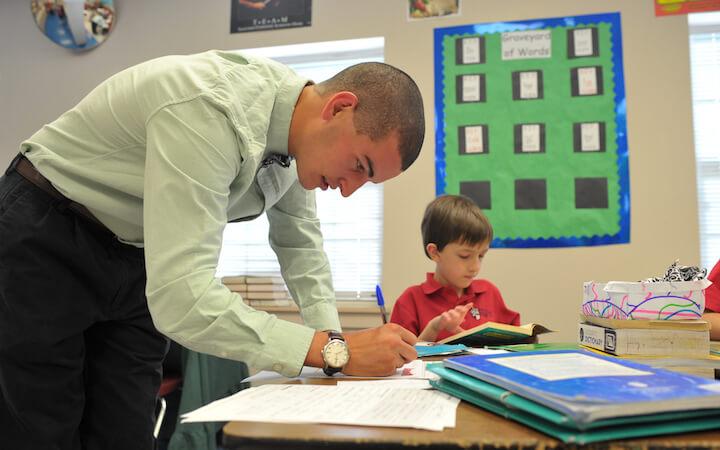Your class undoubtedly looks different than it did one year ago. Still, you must teach the same information with the same quality you did one year ago. How?
Whether you are distance learning, in-person, or hybrid, safety guidelines necessitate alterations to your lesson planning. Recreating lessons from top to bottom may be unfeasible right now, and understandably so. (Frankly, this may feel unfeasible during the best of times). Adapting past lesson plans using current guidelines helps maintain rigorous learning goals and precludes abandoning hard work from previous years. Below are some suggestions for adapting lessons to COVID-19 guidelines as you:
- Identify assets.
- Identify areas that need modification.
- Write an implementation plan and timeline for reassessment.
Identify Assets
Preserve quality content from in-person lesson plans
Use materials that were already successful in your in-person classes—much of it will be as effective under your new guidelines. If you have a worksheet that was effective in the past, scan it into a shared folder and ask students to respond on a separate sheet of paper. If a science lab solidified students' understanding, consider replicating it using materials students have at home or through an online lab simulation. Ask other teachers for lessons that have worked well for them. Try creating as little new work as possible; rely on the good work you've already done.
Maintain successful procedures from the classroom
If you are teaching online, consider which procedures were successful in your traditional classroom. Is the function of the procedure still necessary online? If so, adapt your existing procedure for distance learning. With minimal modification, you can maintain morning meetings, exit tickets, signals for attention/tracking, and structures for cooperative learning.
Identify Areas that Need Modification
Don't abandon group activities-adapt them for an online format
Many favorite activities involve collaborative work among students. Collaboration through shareable online documents can simulate group activities that require movement to different stations, such as Gallery Walk or Jigsaw. Establishing clear roles for each group member can promote communication among students and engagement with the material, even online or six feet away.
Use instructional, adaptive software for asynchronous work time
Many current instruction models have less "seat time" than prior traditional classrooms. Think of asynchronous work time as an opportunity to differentiate for the needs of individual students. Many blended learning software programs adapt to the skill level of each learner and give instructional feedback as students are working, such as Quill or ALECKS. Check out HPL's list of free resources and programs for e-learning.
Write an implementation plan and timeline for reassessment
Acknowledge and name aspects of class that will be different
Higher-Powered Learning has created sample lesson plans adapted for distance learning. Begin with the crucial features of all lesson plans: setting objectives, listing necessary materials, and differentiating for student needs. Then, write specific answers to the questions, "how might this lesson look different than it would pre-guidelines?" and "what approaches will ensure students still achieve the lesson objective?" Naming differences is necessary before developing accommodations and anticipating potential problems. Keep the lesson objective in mind when listing accommodations—choose the ones that will best advance that day's objective.
Set a date to reassess
As with all teaching models, it is crucial to periodically confirm that your approach is promoting student growth. Set a date to reexamine your procedures and lesson accommodations. Have they been successful? Have students mastered the lesson objectives? If not, what other accommodations are possible under the current guidelines?
Fundamentally, good lesson planning is good lesson planning, no matter the circumstances. Set clear objectives, establish clear procedures and expectations, and align activities with desired outcomes and "classroom" conditions.
Have adapted approaches that have worked well in your school this year? Please comment below!
 Alliance for Catholic Education
Alliance for Catholic Education
